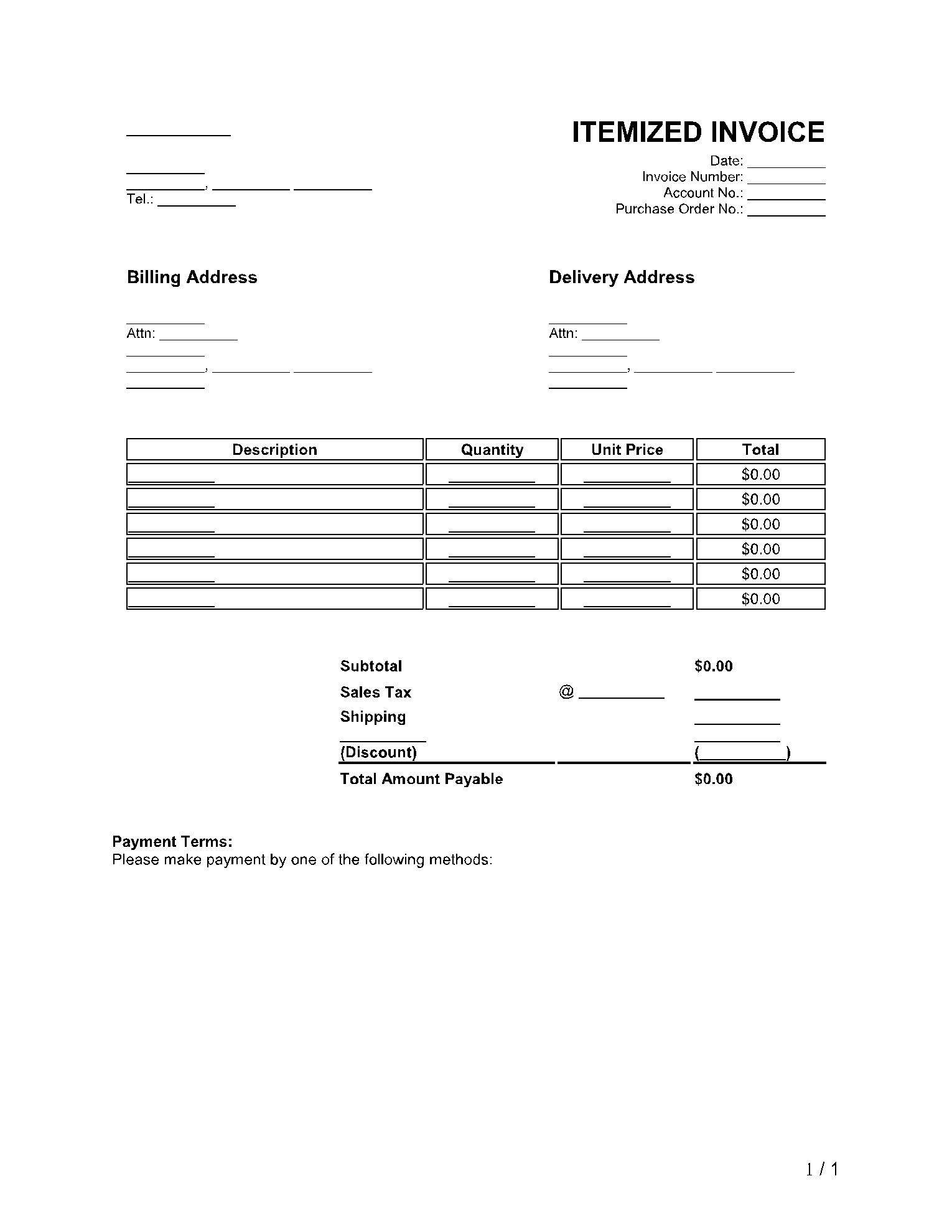The way you itemize your work items decides how quickly you get your payment. For larger companies, this is not a big headache as they have separate functional departments for billing and procurement. But, if you own a small business, this might become a time taking effort.
To make your life easier, itemized invoices are needed, so that you can list all your work items at a single place. It is a quick and straightforward way that saves time in comparison to managing a good number of excel or speed sheets running yourself ragged working on your invoices !
What Is an Itemized Invoice?
In simple language, Itemized Invoice is a document that provides a business statement of all the goods/services that are purchased by the client. The facilities alongside their charges are listed in the order in which they are purchased.
The net billing is done by adding all the costs in the invoice and calculating additional charges and the final amount of tax on it. This amount is distinctly displayed at the bottom of the invoice, and the client is liable to pay it.
When to Use an Itemized Invoice?
The primary purpose of creating an itemized invoice is that your customers know what exactly they’re paying for, how did you reach the total sum due, and you get all this detailed information for your own records. This is how businesses utilize an itemized invoice for receiving payments for multiple items.
As itemized invoices keep a check on the services and their charges, they can serve as a line of sight for both customers and the business to help them understand their total final amount and how it relates to the itemized information.
Itemized Invoices are used in many enterprises such as Hoteling, healthcare, Housekeeping Services, Auto repair services, construction industries, and consultancy services.
What to Include in an Itemized Invoice?
Roughly, an itemized invoice template includes the list of individual services along with their charges followed by the final total amount. Yet, there are specific protocols that are to be followed and components to be added to make an invoice complete.
Those components are as follows:
List All Goods/Services Separately
Before getting down to the total sum of charges, it is vital to list down each product/service separately with the total cost and detailed description. Furthermore, any item sold should also be broken down into materials, labor, add-ons, etc.
Sales Tax
Once all the items are listed individually, it is the time to add them up and calculate sales tax on the total amount. It is to be noted that the rate or percentage of sales tax may vary from state to state or even by the city for that matter.
Type of Payment
You can include whatever is your acceptable payment type in the itemized invoice. Be it check, cash, credit card, money order, paypal, or electronic funds transfer.
As soon as a successful payment proceeds, you should make multiple copies of the invoice and give one copy to the client in order to retain the records of bills for income tax purposes.
Finalize and Bill Customers
At last, when the business is done, it is required to finalize the invoice. All the documents must be consolidated, verified, and attached to it and provided to the client all together along with the payment receipt.
Conclusion
There has been enough emphasis already on how an itemized invoice helps you quicken your billing and payment methods and to retain your tax records, especially when you own a small business. Surely, you would like to create your customized itemized invoice.
CocoSign is a place that does not only provide a vast range of itemized invoice templates but also serves to get you the best-customized template you would love.
